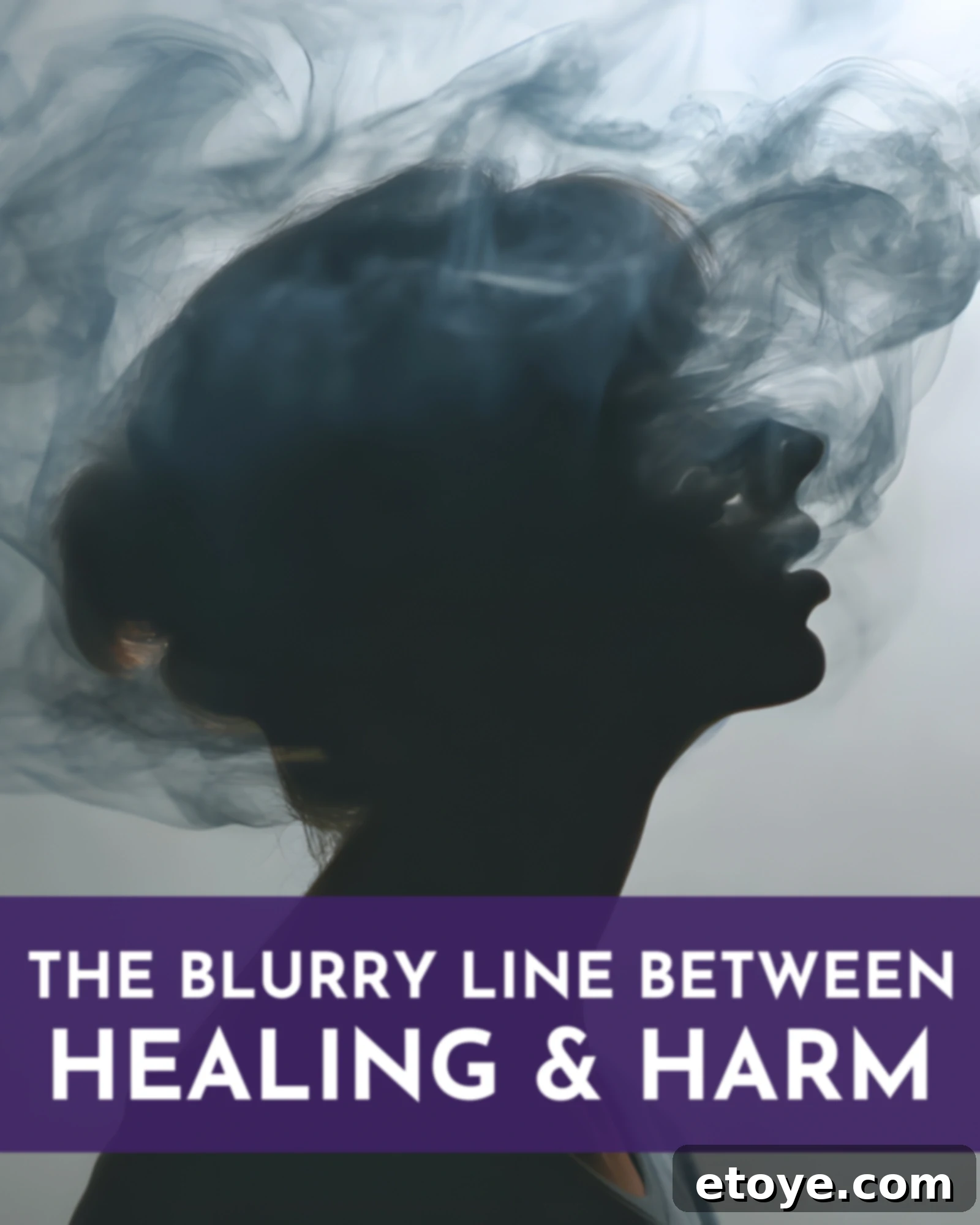Disclaimer: This article is for informational purposes only and is not a substitute for medical advice. If you or someone you know is struggling with ketamine or substance use, please consult a licensed medical professional.
Navigating the Labyrinth: When Ketamine Therapy Takes a Dark Turn
Earlier this year, I shared a deeply personal account of my experience at a ketamine retreat. It was a transformative journey, rich with guided meditations, invigorating waterfall hikes, and rejuvenating yoga sessions. Ketamine, in those initial stages, felt like a key, unlocking dormant parts of my psyche. It softened layers of pain I hadn’t realized I was still carrying, creating much-needed space for the grief, clarity, and profound relief I had sought for years. It felt like a breakthrough, a new beginning. Yet, as with many powerful tools, this wasn’t the entire story.
The initial glow, a sense of newfound peace and insight, was intoxicating. But within weeks, a subtle shift began. I found myself reaching for ketamine more frequently. What started as an effort to maintain that radiant post-retreat feeling gradually morphed into a coping mechanism for daily stress. Insidiously, the usage escalated until I was seeking it not for growth or insight, but merely to feel “normal” again. The line between medicine and master blurred, slowly and silently, until I had unknowingly crossed it.

Recognizing the Red Flags: When Familiar Warnings Resurface
The first signal was a persistent brain fog, a frustrating haze that clouded my thoughts and made focus an elusive challenge. Soon after, my world seemed to dim, as if life was being viewed through a muted filter. Colors lost their vibrancy, textures their richness. Initially, I dismissed these changes, attributing them to the natural progression of age, the relentless grind of stress, or the hormonal shifts of menopause. However, a more alarming symptom emerged: a noticeable increase in urinary frequency, a tell-tale sign of bladder dysfunction often associated with escalated ketamine use.
Deep down, a familiar alarm bell resonated within me. Having navigated a nearly 30-year battle with alcohol addiction, my body was speaking a language I knew all too well. It was a stark choice: confront the unsettling truth or risk very real, potentially permanent damage that was already underway. The silence surrounding substance abuse, especially when it involves prescribed medicines, perpetuates a dangerous cycle. We must shed the stigma and engage in honest, open conversations about how powerful therapeutic tools can, in the wrong hands or without proper oversight, evolve into destructive patterns. True healing necessitates this transparency.
The Deceptive Nature of Ketamine Dependence: Hiding in Plain Sight
This is arguably the most challenging aspect: ketamine dependence often doesn’t present itself as a conventional addiction. It’s remarkably insidious, partly because it frequently masquerades as ongoing therapeutic work. It cleverly cloaks itself in the language of healing and wellness, often supported by the very frameworks intended to help. Individuals caught in this pattern rarely identify as “addicts”; instead, they perceive themselves as “doing the work,” diligently pursuing personal growth and emotional well-being.
The internal dialogue can be incredibly convincing, filled with justifications that reinforce the cycle:
“I’m engaging in crucial inner child healing.”
“This is essential for managing my chronic anxiety and depression.”
“I rely on ketamine to access and process my deeper emotions.”
“Since it’s doctor-prescribed, it must be inherently safe and non-addictive.”
These rationalizations, while seemingly logical on the surface, can obscure a deeper truth. When you find yourself using ketamine primarily to escape the realities of your life rather than to face them with newfound strength, the medicine has subtly, yet powerfully, become your master. In doing so, you relinquish your agency and power, transforming a potential ally in healing into an unforeseen adversary.
The Stark Reality: Real and Often Irreversible Physical Damage
The clinical guidelines for licensed ketamine providers typically recommend dosing at frequencies of one to two times per week. Yet, a concerning number of individuals drift into daily or near-daily use. At such escalated frequencies, ketamine can inflict significant and lasting harm, particularly when early warning signs are overlooked or rationalized away. The documented risks are severe and varied, affecting multiple bodily systems.
Key documented risks include:
Ketamine-Induced Cystitis: This devastating condition causes persistent urinary urgency, severe pelvic pain, and in advanced stages, irreversible bladder shrinkage. This can necessitate complex surgeries, and in the most extreme cases, lead to the complete loss of bladder function, profoundly impacting a person’s quality of life.
Cognitive Impairment: Users often experience memory difficulties, significant challenges with focus and concentration, and a pervasive emotional dullness. These symptoms are frequently misattributed to normal aging, the stresses of burnout, or the natural progression of menopause, delaying crucial intervention.
Cardiovascular Strain: Regular ketamine use can lead to elevated blood pressure and an increased heart rate, placing undue stress on the cardiovascular system. This heightens the risk of serious health events such as strokes or other cardiac incidents, especially for individuals with pre-existing conditions.
Organ Stress: The liver and kidneys, vital organs for detoxification, bear a substantial burden from frequent ketamine use. This strain is compounded significantly when ketamine is combined with other substances like alcohol or various medications, potentially leading to chronic damage.
Psychological Dependence: Beyond a mere craving for the “high,” psychological dependence signifies a gradual erosion of a person’s ability to cope with life’s challenges without the substance. It’s a subtle but profound loss of natural resilience and emotional self-regulation.
If you suspect that you or a loved one might be experiencing these adverse effects, it’s crucial to be aware of the following signs:
A noticeable shift from a previously calm and grounded demeanor to increased irritability or persistent brain fog.
Frequent, often urgent, trips to the bathroom, coupled with disrupted sleep patterns.
A pattern of increasing ketamine dosages, often accompanied by denial or downplaying the extent of use.
Combining ketamine with other substances in an attempt to intensify or prolong its effects.
A subtle but growing sense of disconnection from life, from meaningful relationships, and from sources of genuine joy.
In the often-unregulated landscape of the wellness industry, these warning signs are particularly easy to overlook. The narrative around ketamine is frequently framed in spiritual, intentional, or therapeutic terms, making it challenging to differentiate genuine healing from escalating dependence. My own experience stands as a testament to this deceptive subtlety.
The Foundation of Healing: The Imperative of Honesty
Let me be unequivocally clear: properly administered ketamine-assisted therapy can be a revolutionary treatment. When utilized under strict medical supervision and integrated with robust therapeutic support, it has profoundly helped countless individuals overcome conditions like treatment-resistant depression, severe PTSD, and debilitating chronic anxiety. For many, it represents the first effective intervention after years of exploring other avenues. This is not only valid but often life-saving, offering a genuine path to relief and recovery.
However, the efficacy and safety of this powerful medicine fundamentally hinge on absolute honesty. Honesty with yourself, with your therapist, and crucially, with the medical professional who prescribes it. If you are considering ketamine therapy, or are already undergoing it, the goal here is not to incite shame or fear. Instead, it is an urgent call to cultivate self-awareness and maintain a grounded perspective throughout your journey.
If you have a personal history of addiction, experiences with dissociation, or tendencies toward compulsive behaviors, it is vital to disclose this information from the very outset. Transparency in these areas allows your medical team to tailor your treatment plan more safely and effectively. Furthermore, if you begin to notice a dependence – perhaps feeling that you “need” a session to navigate your week – it is imperative to speak up immediately. Open communication is your strongest defense against the medicine taking over.
My Journey Back: Confronting the Truth and Taking Action
The moment I recognized the insidious signs of dependency within myself, I knew I couldn’t ignore them. The echoes of a past struggle were too loud to dismiss. I reached out to my primary care provider, preparing myself to lay bare the full extent of my experience. I disclosed everything: my concerning symptoms, my growing anxieties about my escalating dosage, and the unsettling feeling that I was losing control. Together, we decided to conduct a comprehensive panel of blood tests.
The results were sobering. One particular marker returned dangerously abnormal, a finding that, while not definitively linked, *could* be connected to my ketamine use. The uncertainty alone was a profound wake-up call, shaking me to my core. It was the undeniable evidence I needed to fully confront the truth of my situation. I realized I had to get honest with myself, and swiftly redirect the trajectory I was on.
My story could have easily taken a different, more damaging path. But in that critical moment, I chose truth, just as I had in previous battles with addiction. This commitment to honesty didn’t offer instant relief, but it began to clear the mental fog. It provided just enough clarity to discern the essential next steps: not merely to cease using ketamine, but to actively begin replacing the void it left behind. Healing is not solely about what you abandon; it is fundamentally about what you build, cultivate, and nurture in its place.
Replace & Redirect: Crafting a New Path to Wellness
The intense pull of cravings does not simply vanish. They are powerful impulses that demand a destination, a channel for their energy. As someone with a history of addiction, I understood this intimately. I knew that simply quitting ketamine without intentionally replacing it with something else would inevitably create a vacuum. And nature abhors a vacuum; that empty space would soon be filled, potentially by the very old loops of destructive behavior, albeit in a new guise.
So, my approach wasn’t just about stopping; it was about deliberate redirection. I consciously exchanged the problematic pattern for healthier, more productive alternatives that nurtured my body, mind, and spirit. I embarked on learning two completely new skills: weightlifting for physical strength and well-being, and delving into real estate to build financial wealth. This strategy – becoming ‘obsessed’ with acquiring new, beneficial skills – has been my unwavering blueprint for overcoming past dependencies, whether it was sugar, alcohol, or spirals of self-sabotage.
This approach, which proved transformative for me, may offer a similar pathway for you. Instead of engaging in a grueling, white-knuckle fight against temptation, shift your focus. Dedicate your energy to retraining your nervous system to discover a sense of safety, reward, and regulation through activities that are genuinely healthier and more constructive. The goal isn’t just to break a detrimental habit by sheer willpower. It’s about proactively building something stronger, something that authentically serves your long-term well-being, in its place.
True healing with ketamine, while profoundly possible, must be anchored in unflinching clarity, not self-deception. This requires consistent self-assessment and an unwavering commitment to ensure that you remain the one choosing the medicine, rather than passively allowing the medicine to choose you.
Helpful Resources:
SAMHSA National Helpline: 1-800-662-HELP (4357) – 24/7, free and confidential support.
Psychology Today: psychologytoday.com (Filter by substance use/ketamine experience to find qualified professionals).
Urology Care Foundation: urologyhealth.org (For information and support regarding bladder health and conditions like Ketamine-Induced Cystitis).
Fireside Project: firesideproject.org (Offers psychedelic peer support for those navigating experiences with psychedelic substances).
